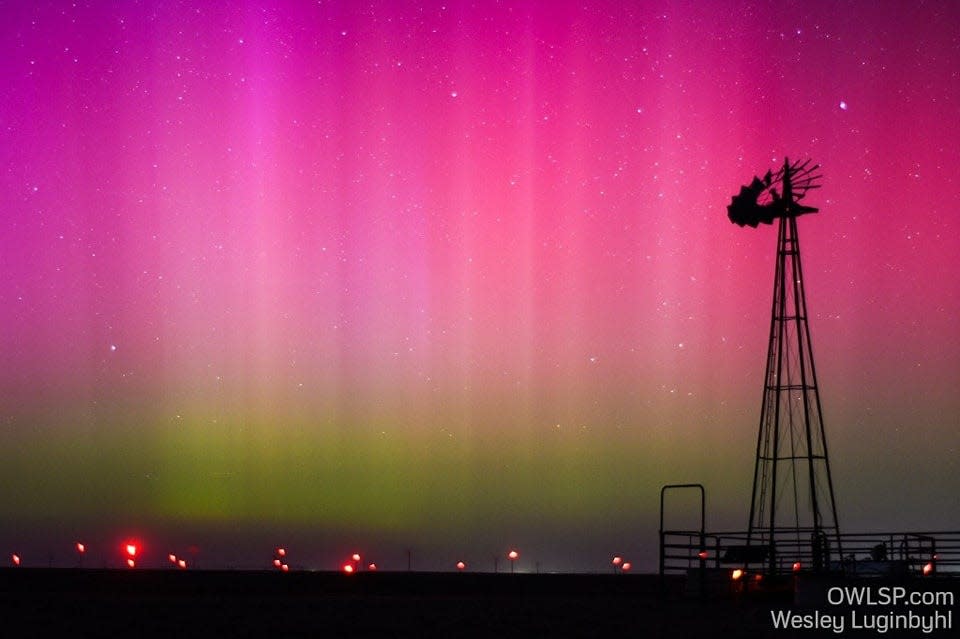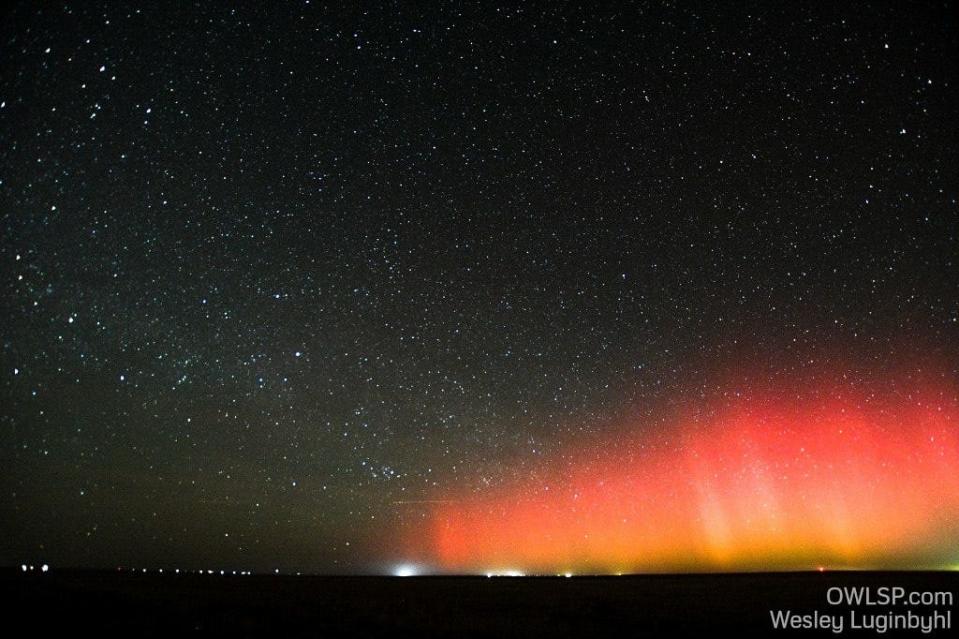Why the Northern Lights made a rare appearance in the Texas Panhandle

A rare sight was visible in the Texas Panhandle Sunday night. Lucky flatlanders as far south as Turkey could spot the aurora borealis, or northern lights, illuminating the horizon in a dazzling display of color.
This is the second time in as many months the phenomenon has been visible in the Amarillo area, with a similar display stunning amateur astronomers and Panhandle-dwellers the evening of March 24.
Amarillo photographer Wesley Luginbyhl was lucky enough to catch the brilliant display both times, with his photos trending on social media quickly afterward.
"It's something I've tried for probably a decade to try to see down here. I drove all the way up to central Kansas before to try to see them and came up with absolutely nothing," Luginbyhl said. "I've seen them twice now. It's 99.9% luck."
Luginbyhl said the Sunday night light show was particularly intense.
"The blue lights that you see in the photo are almost directly overhead," Luginbyhl said. "It looked like there was a big, large city to your north no matter which direction you looked."
Why can we see the northern lights near Amarillo?
David Craig, Ph.D., an associate professor of physics at West Texas A&M University in Canyon, told the Avalanche-Journal the back-to-back sightings occurred because the sun is moving into a time of increased activity. As the sun becomes more active and energetic, so does the aurora.

"The sun has a magnetic field cycle of about 22 years, and every 11 years, its overall magnetic field drops way down," Craig said. "When that happens, you get more solar flares, where you have particles ejected out into space, you get more sunspots, and the earth is sort of linked to the sun by its magnetic field."
The ejected particles are trapped in the earth's magnetic field and funneled down the earth's magnetic field lines, Craig said. "As they go down the magnetic field lines, they hit the atoms in the earth's atmosphere, and they cause them to glow like a neon light."
Craig said the sun is coming out of a period of low activity and transitioning into a more active period, making it more likely — though still rare — to see the northern lights in Texas.
"There's always a region around the north pole — Alaska, Canada, Siberia — where you can see the northern lights anytime the sun is active, but when the sun becomes especially active, or when you have a big set of flares that happen to be pointed towards the earth, that region where the aurora can be caused can spread further south," Craig explained.
But if you're hoping you can step out on your porch one evening to see the aurora, don't get your hopes up too high.
"In theory, we should get more shots to see it, but there's still so many factors that go into the aurora actually hitting here," Luginbyhl said. "Even when you get a strong ejection from the sun, and it actually hits Earth, there's all sorts of little things that go into whether the auroras are actually a big show or like nothing."
This article originally appeared on Lubbock Avalanche-Journal: Why the Northern Lights made a rare appearance in the Texas Panhandle

